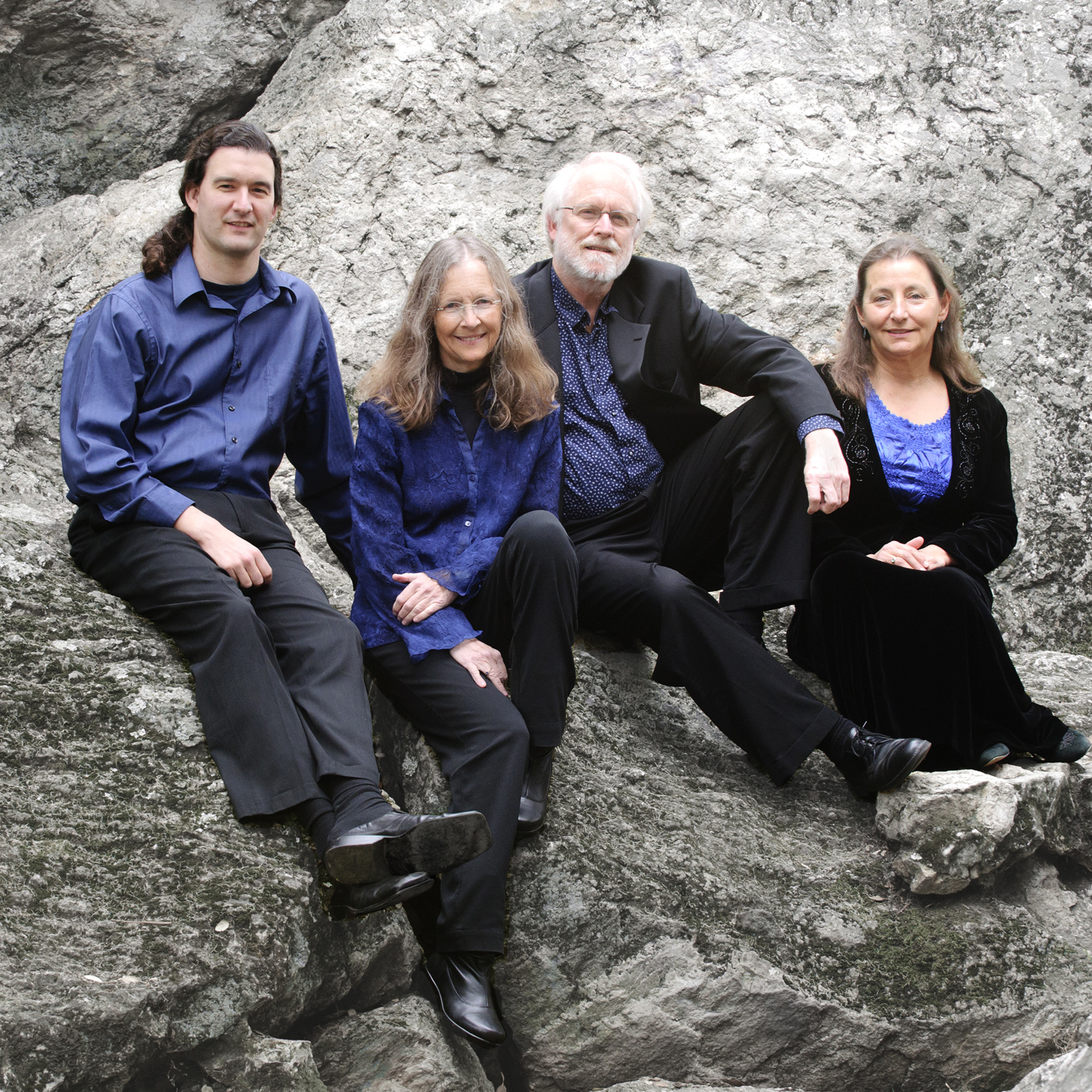This season, the New Esterházy Quartet (Lisa Weiss and Kati Kyme, violin; Anthony Martin, viola; and William Skeen, cello) have been treating Bay Area audiences to delightful snapshots of string quartet performance history. So far, the programs they brought to life—the 1766 “Tuscan Quartet” in September and the 1784 “Party at Storace” in November—have been speculative recreations of gatherings of friends, not of public concerts whose exact programs are still known.
 That changes with this upcoming re-enactment of a musical evening in Paris from the winter of 1822, featuring Boccherini’s Quartet op. 32/6, G206; Haydn’s Quartet op. 76/2; the Andante from Mozart’s Quartet K464; and Beethoven’s Quartet op. 18/5. The program, played by violinist Pierre Baillot (1771–1842) and his colleagues, was part of an established public concert series, started by Baillot in 1814. Members of the aristocracy and government officials paid for a subscription, and composers and fellow performers were admitted for free. The series, also called séances de quatuors et de quintettes, was so popular that the performances were moved to a larger venue in 1830.
That changes with this upcoming re-enactment of a musical evening in Paris from the winter of 1822, featuring Boccherini’s Quartet op. 32/6, G206; Haydn’s Quartet op. 76/2; the Andante from Mozart’s Quartet K464; and Beethoven’s Quartet op. 18/5. The program, played by violinist Pierre Baillot (1771–1842) and his colleagues, was part of an established public concert series, started by Baillot in 1814. Members of the aristocracy and government officials paid for a subscription, and composers and fellow performers were admitted for free. The series, also called séances de quatuors et de quintettes, was so popular that the performances were moved to a larger venue in 1830.
One of the reasons the series was so beloved might be its—for that time—extremely unusual format: an entire concert with quartet music only, including music by “older” composers. In the early 1800s, people were not used to seeing one single ensemble occupy the stage for an entire concert. The common concert featured symphonies with operatic extracts, instrumental solos, chamber music, and prodigies’ displays, not the two to three hours of quartets and quintets Baillot and his friends offered. The quartet’s program annotator and Baillot expert, Dr. Fabio Morabito of the University of Oxford, says:
“We only need to remind ourselves that, for instance, the audience at the Viennese premiere of Beethoven’s Violin Concerto in 1806 also listened to a piece played with the violin turned upside down; or that, around 1840, Franz Liszt caused a stir across Europe when he started to appear on the stage alone for the entire length of the concert, with no orchestra or singers to intersperse his virtuosic feats.”
Also, programming music from previous decades was by no means common for early nineteenth-century concerts.
The members of the New Esterházy Quartet—violinists Lisa Weiss and Kati Kyme, violist Anthony Martin, and cellist William Skeen—often occupy the first chairs of Philharmonia Baroque Orchestra and other period music ensembles. With Haydn’s 68 quartets as their core repertoire, the New Esterházy Quartet is increasingly recognized as one of the world’s top period-instrument string quartets. The quartet has been praised for their “sumptuous sound with beautifully controlled dynamics” and recently received accolades in Early Music America Magazine for their Haydn in America CD.
Performances take place the last week of January: 8:00 p.m., Friday, January 26, at the Hillside Club, 2286 Cedar Street in Berkeley; at Saturday, January 27, at Saint Mark’s Lutheran Church, 1111 O’Farrell St (at Franklin) inSan Francisco; and 4:00 p.m., Sunday, January 28 at All Saints’ Episcopal Church, 555 Waverley Street (at Hamilton) in Palo Alto. Tickets for the Friday performance, presented by the Hillside Club, are $25 and are sold only at the door. Tickets for the Saturday and Sunday performances are $30 (with discounts for SFEMS members, seniors, and students) and may be pre-ordered at 415-520-0611 or http://www.newesterhazy.org/.












